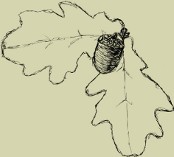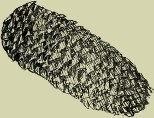42 41 40 39 38 37 36 35 34 33 32 31 30 29 28 27 26 25 24 23 22 21 20 19 18 17 16 15 14 13 12 11 10 9 8 7 6 5 4 3 2 1
Issue 40 (2009)
The paper was aimed at study of permanent changes in beech and ash wood after its hydrothermal plasticization over a temperature range from 100 to 160°C. Changes in selected physical and mechanical properties were observed.
The results showed that conspicuous changes in properties occurred after plasticization at temperatures exceeding 140°C. It could also be observed that relations have been found between the changes in physical and mechanical properties of wood chemical structure and properties.
Key words: hydrothermal plasticization, beech wood, ash wood, shrinkage, density, strength, colour
Hydrothermal treatment of wood has a variety of impacts on wood components. This article presents chemical changes in ash and beech wood resulting from influence of autohydrolysis. Depending on the operational conditions used in the experiment, polysaccharides (mainly hemicellulose portion – primarily xylans, and amorphous portion of cellulose) are depolymerised to mono- and oligomers. Sugars in monomeric form are, as a result of hydrolysis processes, dehydrated to low-molecular carbonyl compounds (e.g. 2-furaldehyde, 5-hydroxymethyl-2-furaldehyde). Water-soluble lignin concurrently undergoes degradation reactions. In the hydrolysates there were determined syringaldehyde and vanillin.
Key words: ash, beech, hydrothermal treatment, saccharides, carbonyl compounds
Studies were carried out on composts obtained from post-use wood waste after one year of composting in compost heaps. In pot tests, willow, Salix purpurea L. ‘Ferrinea’ was applied. Cultivation was carried out in two vegetation seasons in substrates consisting of a mixture of mineral soil and compost (v:v = 3:1). After each vegetation season, the yield effectiveness and the content of macro- and microcomponents in the leaves and shoots of the studied plants were determined.
Key words: post-use wood waste, compost, willow Salix purpurea L.
The goal of this research was to exploit the potential of near infrared spectroscopy to measure and characterise various types of surfaces common in the wood/related products and to present their capabilities for application into wood research and industry. Wooden blocks originated from different countries, of various wood species and different finishes have been evaluated. Characterisation of the archaeological wood was also performed by measuring fragments of wood excavated at the site. It has been found that near infrared spectroscopy can be successfully utilized for: recognition of wood species, quantify chemical composition of wood, detection of surface finish type and monitoring of the wood/coated wood weathering. The near infrared technique could be used for analyses of archeological wood and determination of its geographical origin. Dedicated tests performed on spruce (Picea abies sp.) originated from Finland, northern Poland, southern Poland and various valleys of Italian Dolomites confirmed that it is possible to determine the wood proveniences by measuring its near infrared spectra.
Key words: FT-NIR, wood chemical composition, wood ageing, wood origin
This paper presents results of experiments on volatile organic compound emissions from waterborne and nitrocellulose lacquer coatings applied onto oak wood samples. Volatile organic compounds were analysed using the technique of gas chromatography coupled with mass spectrometry. Volatile organic compounds were identified employing the technique of solid phase microextraction (SPME) which is utilised in various scientific disciplines but so far has not been used in the analysis of volatile organic compounds present in lacquer products. The following three types of fibres were used in the performed experiments: Polydimethylsiloxane (PDMS), Polydimethylsiloxane/Divinylbenzene (PDMS/DVB), Carboxen/Polydimethylsiloxane (CAR/PDMS) with the aim to compare their sorption properties and determine their usefulness in investigations on volatile organic compound emissions from currently manufactured furniture.
Key words: volatile organic compounds (VOCs), lacquer coatings, solid phase microextraction (SPME)
The relation between the heat of combustion of wood and the absorbance of its MIR spectrum in the 1515 (1510) cm−1 band follows a straight line. It was found for both pine and beech wood decomposed by chemical and biotical factors.
Key words: pine wood, beech wood, heat of combustion, 1515 (1510) cm−1 band MIR spectrum
The information of saccharides qualitative presence and quantitative abundance in lignocellulosics is very important from the viewpoint of the saccharides structure knowledge. In the paper the optimization is described of sugar aldonitrilacetates capillary gas chromatography method and its evaluation for the separation and quantification of carbohydrates in various samples. For the monosaccharides identification six aldonitrilacetates of standard carbohydrates (rhamnose, arabinose, xylose, manose, glucose, galactose) were prepared. Three sulphate spruce pulps were hydrolysed by Saeman et al. (1954) method. Also holocellulose was prepared by Wise et al. (1946) method from beech wood before and after prehydrolysis. Then the samples were derivatised to aldonitrilacetates. The gas chromatography was performed on Fisons 8310 DPFC GC with flame ionisation detector and DB-5 capillary column with inositol as an internal standard. The retention times, response factors, resolution and recovery of the standard carbohydrates aldonitrilacetates were received. The obtained results of the saccharides determination in the pulps and holocellulose showed the suitability of aldonitrilacetates for the saccharides from cellulosics analysis by method of the capillary gas chromatography.
Key words: carbohydrates, wood, pulp, gas chromatography, aldonitrilacetates
The presented studies included young shoots of basket willow (Salix viminalis L.), stalks of woodland sunflower (Helianthus tuberosus L.), straw of perennial grass of miscanthus (Miscanthus sinensis (Thunb.) Anders.) and stalks of Virginia mallow (Sida hermaphrodita Rusby). In the studied lignocellulosic raw materials the following determinations were carried out: chemical composition (contents of soluble substances, cellulose, lignin and pentosans), elementary composition (contents of carbon, nitrogen, hydrogen and sulphur), heat of combustion as well as calorific value and ash content.
Key words: Helianthus tuberosus L., Sida hermaphrodita R., Miscanthus sinensis (Thunb.) Anders., Salix viminalis L., chemical properties, energetic properties
Apart from solid wood, wood-based panels (WBP) are currently used in building as insulating and construction materials and as such they are exposed to factors creating conditions favourable for growth of wood attacking fungi. Classical tests of WBP resistance to fungi activity usually cover determination of mass loss caused by Basidiomycotina fungi or growth rate of mould fungi. Changes of WBP strength have been determined in research in addition to the above-mentioned indicators of WBP resistance to fungi. The mass loss of WBP caused by rotting activity of fungi was compared with mass loss of solid Scots pine sapwood. The aim of the investigation was to establish resistance to fungi activity of nowadays manufactured domestic WBP according to currently used modified method of resistance evaluation. The following wood based panels (WBP) were tested for the action of Basidiomycotina fungi or Ascomycotina and Deuteromycotina fungi causing wood moulding: OSB with various glues (MUF, PMDIsocyanate), regular and laminated particle boards (UF glue), and wet- and dry-process fibre boards (MDF, HDF). The resistance of tested materials to fungi activity was defined by determination of mass loss (PN-EN 113 and PN-ENV 12 083 – (Basidiomycotina)) as well as by determination of the degree of wood coverage with mould (ITB Instruction no 355/98), and also by determination of the effect of these fungi action and humidity on compression strength. Thanks to the test methods used significant changes in tested WBP were shown, thus knowledge about the influence of fungi on WBP properties was broadened.
Key words: fungi, panels, wood, resistance, strength
In this paper methods for adsorption study of quaternary ammonium based ionic liquids and cationic surfactants on Scots pine (Pinus sylvestris L.), model lignin and cellulose are presented. Kinetic and equilibrium of compounds were evaluated. The equilibrium data fitted very well to the Langmuir and Freundlich adsorption models. The highest correlation coefficients determined from the pseudo-second order kinetic model confirm the key role of chemisorptions in the process of thickening of ionic liquids on the wood surface. The bonding identification of ammonium cations and long alkyl substituents (of investigated salts) into the Scots pine wood was carried out using IR spectroscopy.
Key words: ionic liquids, equilibrium and kinetic adsorption, pine wood, lignin, cellulose, FT-IR
Three months’ duration creep tests in four-point bending were carried out on 12 mm thick oriented strand board OSB/4. Bending samples 600 by 33 mm were loaded in the plane of panel. Twelve samples were divided into three groups, each tested under another stress level: 21, 42 and 53% of the modulus of rupture. The results of the creep tests were approximated using the creep functions of three-, four- and five-element viscoelastic models. Additionally, a destructive test was conducted on 48 samples to obtain the modulus of rupture of OSB/4 loaded in the plane of panel.
Key words: oriented strand board (OSB), creep, viscoelasticity, creep compliance, creep model, bending, modulus of rupture (MOR), stress















 Download PDF
Download PDF